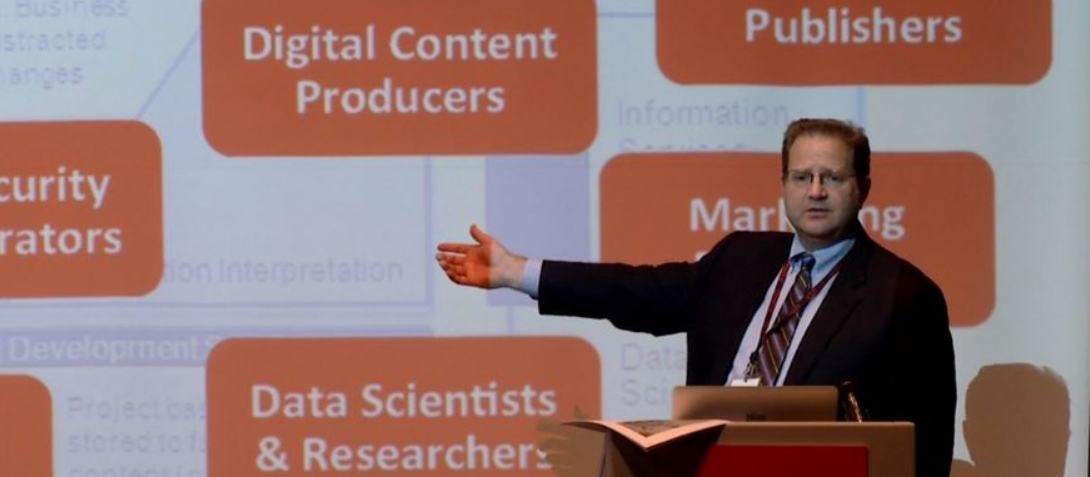(Warning – hyper-theoretical stream of probably uninformed semi-consciousness to follow…)
In considering the possible types of information that might need to included in Enterprise Information-Sharing programs, while sifting through my TweetDeck, something’s become quite clear – most of our Government information-sharing exercises are all about “Signals”, “Data”, and “Information” that are already known (at some level) to be “required”, “useful”, or “possibly interesting” – judged as so by existing processes, policies, roles, business rules and perhaps knowledgebase ontologies.
I’d like to, however, receive and share more information from the government that’s “probably interesting”, but that hasn’t yet been confirmed as so by them, or me and my community.
This happens all the time in social media, where I’ve subscribed to or participate in an information-exchange forum based on a particular knowledge context (and within my own agenda), and routinely view information that’s been posted within this context for unintentional use….i.e. it “is” interesting to the poster, who, by virtue of their understanding of community context, assumes therefore that it’s “probably” interesting to others in the community. Not “possibly” (which if so, would be posted to a non-specific public forum), but “probably”. Destined for “unintended, though probable use”.
Over at data.gov, some “possibly interesting” information is being made available for further consumption and mashing – but some thought was already applied to determining its likely level of usefulness, constrained by security requirements, information-sharing policies and the role descriptions of the posters. Therefore, a lot of it isn’t interesting, or probably interesting, at all.
Now, if a mashup application had relatively unfettered access to a variety of government data sources, from which it developed a “knowledge map”, and could semantically compare this map to a map of my own personal knowledgebase (i.e. my blog, my articles, my social media conversations, things I like to read, favorite books, etc.), and then react (perhaps with some basic guidance from me) to contextual “information-sharing events” (i.e. the arrival or transformation of certain information) with intelligent alerts that some “probably interesting information” were available – now that would be something.
Kind-of like when my 5-year old arrives home from preschool, with loads of “probably interesting information” about other families, teachers, etc. Much better than gossip.
In considering the possible types of information that might need to included in Enterprise Information-Sharing programs, while sifting through my TweetDeck, something’s become quite clear – most of our Government information-sharing exercises are all about “Signals”, “Data”, and “Information” that are already known (at some level) to be “required”, “useful”, or “possibly interesting” – judged as so by existing processes, policies, roles, business rules and perhaps knowledgebase ontologies.
I’d like to, however, receive and share more information from the government that’s “probably interesting”, but that hasn’t yet been confirmed as so by them, or me and my community.
This happens all the time in social media, where I’ve subscribed to or participate in an information-exchange forum based on a particular knowledge context (and within my own agenda), and routinely view information that’s been posted within this context for unintentional use….i.e. it “is” interesting to the poster, who, by virtue of their understanding of community context, assumes therefore that it’s “probably” interesting to others in the community. Not “possibly” (which if so, would be posted to a non-specific public forum), but “probably”. Destined for “unintended, though probable use”.
Over at data.gov, some “possibly interesting” information is being made available for further consumption and mashing – but some thought was already applied to determining its likely level of usefulness, constrained by security requirements, information-sharing policies and the role descriptions of the posters. Therefore, a lot of it isn’t interesting, or probably interesting, at all.
Now, if a mashup application had relatively unfettered access to a variety of government data sources, from which it developed a “knowledge map”, and could semantically compare this map to a map of my own personal knowledgebase (i.e. my blog, my articles, my social media conversations, things I like to read, favorite books, etc.), and then react (perhaps with some basic guidance from me) to contextual “information-sharing events” (i.e. the arrival or transformation of certain information) with intelligent alerts that some “probably interesting information” were available – now that would be something.
Kind-of like when my 5-year old arrives home from preschool, with loads of “probably interesting information” about other families, teachers, etc. Much better than gossip.

Comments
It sounds like you are seeking some way of identifying information about which you will be "probably interested" in hearing/reading, but of which you have no prior knowledge or expectation of being informed.
A serendipity engine, as it were.
Amazon.com does this by tracking users paths amidst their information warehouse - or store, as it were - and combining those paths with the actual record of what people actually buy. In an information management context, we can just as easily track a users path across a knowledge base and similarly report on what items they willfully choose to download for further analysis.
Serendipity Engine. I like that. Were you seeking a specific product recommendation or making an indirect request for a development team to come along and build one?